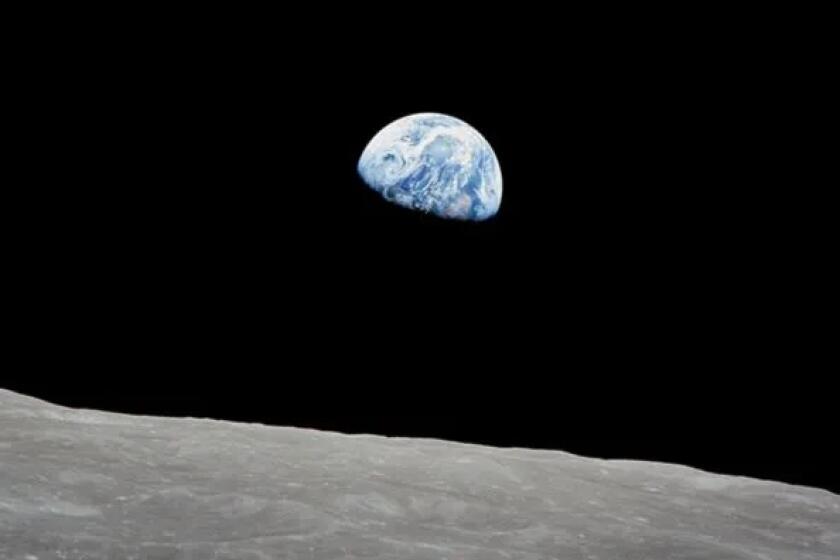Liftoff! TESS, NASA’s new planet-hunting space telescope, is now in space
Move over, Kepler. NASA’s TESS spacecraft launched Wednesday at 3:51 p.m. Pacific time on a SpaceX Falcon 9 rocket from Cape Canaveral Air Force Station in Florida.
In a matter of minutes, the rocket went supersonic, shed its first stage, which returned to a drone ship in the Atlantic Ocean, and left Earth’s atmosphere for good, NASA officials said.
It will take 60 days before TESS reaches its planned orbit and begins its science mission. So far, the spacecraft’s mission is going as planned, officials said.
An attempt to launch Monday was scrubbed so that SpaceX could run additional analyses on the guidance, navigation and control systems.
TESS will use its four cameras to stare at the heavens, searching for relatively small worlds around nearby stars. It will shift its gaze roughly every 27 days, giving it a glimpse of almost every part of the sky by the end of its two-year primary mission.
Scientists want to discover planets that are less than four times the radius of Earth, and then use other telescopes to determine the mass of 50 of them. Some of those finds might be small and rocky, like Earth.
The mission, led by MIT and managed by NASA’s Goddard Space Flight Center, follows NASA’s groundbreaking Kepler Space Telescope, whose primary mission has so far revealed 2,244 candidate planets and 2,343 confirmed planets. Of those confirmed worlds, 30 are less than twice the size of Earth and in their star’s habitable zone, where liquid water could remain stable on the planet’s surface.
NASA is about to step up its planet-hunting game with the launch of TESS »
TESS, scientists said, takes that mission even further. While it won’t be able to study the planets it finds on its own, it will identify the most intriguing targets for follow-up study. Other telescopes will be able to determine the mass of a share of TESS’ planets, and future spacecraft, such as NASA’s James Webb Space Telescope, will be able to probe some of the promising worlds’ atmospheres for potentially life-friendly chemicals, such as water, oxygen and methane.
“Before Kepler launched, we didn’t know for sure if Earth-sized planets existed. Kepler was a statistical survey that looked at a small patch of sky for four years, and taught us that Earths are everywhere,” Elisa Quintana, an astrophysicist at NASA’s Goddard center, wrote Monday in a Reddit Ask Me Anything ahead of the launch. “TESS is building on Kepler in the sense that TESS wants to find more small planets, but ones that orbit nearby, bright stars.”
Whereas Kepler looked for planets up to 3,000 light-years away, TESS will focus on neighboring worlds up to a tenth of that distance from Earth. It will look at the planets orbiting red dwarfs, which are stars so small and dim that circling planets with short, easily detectable orbits might still be covered in liquid water.

NASA is planning to launch its Transiting Exoplanet Survey Satellite in mid-April. TESS will help scientists study exoplanets that orbit other stars. The trick is to watch them as they pass in front of their host stars.
TESS will scan roughly 85% of the sky over two years and stare at over 200,000 stars. And because it’s in a highly elliptical, stable orbit that’s locked in a resonance with the moon, it won’t need fuel to stay on course – which means, if the mission is extended, that TESS could be searching the skies for years to come.
That orbit will also allow TESS to swing close to the Earth once every revolution —which will help the spacecraft unload far more data than Kepler could send home. That trove of information could keep professional astronomers and citizen planet-hunters busy for a very long time, TESS project manager Jeff Volosin said at a briefing Sunday.
TESS rises as Kepler’s star begins to fall. The pioneering spacecraft — launched in 2009, hobbled in 2013 and then given new life as the K2 mission — is set to run out of fuel in the coming months.
Follow @aminawrite on Twitter for more science news and “like” Los Angeles Times Science & Health on Facebook.
MORE IN SCIENCE:
NASA is about to step up its planet-hunting game with the launch of TESS
One of the solar system’s early planets didn’t survive, but its diamonds are now on Earth
Organs from drug overdose victims could save the lives of patients on transplant waiting list
UPDATES:
4:35 p.m.: This article was updated to add that the TESS spacecraft had launched.
This article was originally published at 2 p.m.







